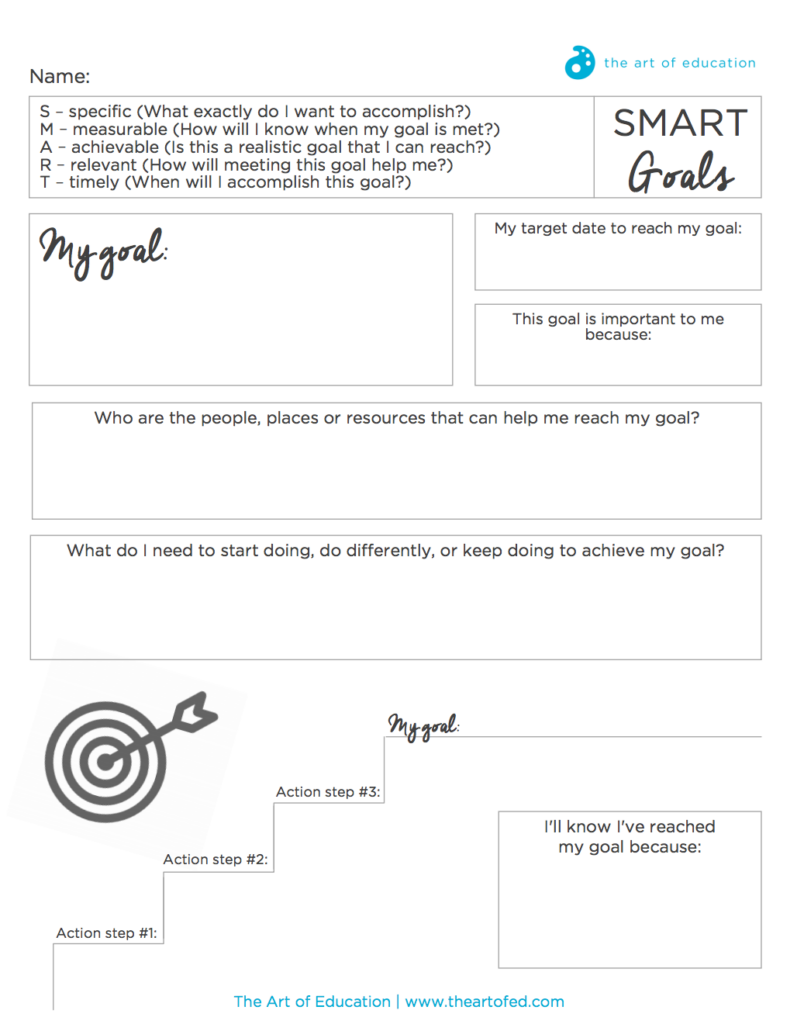We constantly set goals in education. As teachers, we set goals for professional development and teacher evaluation purposes but rarely do we make a focused effort to help students set goals for themselves. Guiding students to set and work toward goals can be a game changer for showing student growth in the art room. Once a student can articulate what they want to improve in their learning, the role the teacher plays becomes a whole lot clearer. The trouble is, how do we get students to practice goal setting and use concrete steps to reach determined goals?

Over the last few school years, I’ve helped my advisory students outline a goal they want to achieve for the current year. Initially, many students listed vague ideas, like getting “good” grades or getting all their work in on time. It wasn’t until we reviewed the idea of a SMART goal that students were able to narrow down their focus and identify a specific area where they wanted to work toward improvement. SMART goals are goals that are specific, measurable, attainable, realistic and timely (hence the SMART acronym). Identifying goals that fit these criteria takes practice. Most students need guidance to work through this process.
As I worked with my advisory students, I wondered how student goal setting and action plans could be used to illustrate meaningful student growth. Sure, I could set some general growth expectations and criteria for my students, but what if instead, students identified areas where they personally wanted to improve? Would students work toward their goals with increased perseverance and a stronger growth mindset? How would this affect student achievement?
In AOE’s Showing Student Growth in Art course, various types of student growth models are presented and explained. Presented models vary from simple and adjusted growth to value table and value-added models. Although these are guaranteed and viable ways to determine student growth over time, in an environment like the art room, measuring growth this way sometimes feels cumbersome and disconnected. By having students set their own goals connected to their own personalized learning, results will look and feel more applicable and relevant to the growth we want to experience in art education.
Consider using the download below as a guide to help your students write their own SMART goals. The guide breaks the process of goal writing down into manageable, fluid steps for students. Be sure to also model and provide examples of goal writing to your classes to ensure well-written and articulated goals aligned to student learning objectives.
Download Now
To further explore and strengthen your understanding of how to best show student growth in your art room, check out the course, Showing Student Growth in Art, here. Gain confidence in your ability to demonstrate student improvement while working with and learning from art teachers around the world.
How do you demonstrate growth in your art room?
What methods do you use to assist students with goal writing?
Magazine articles and podcasts are opinions of professional education contributors and do not necessarily represent the position of the Art of Education University (AOEU) or its academic offerings. Contributors use terms in the way they are most often talked about in the scope of their educational experiences.






